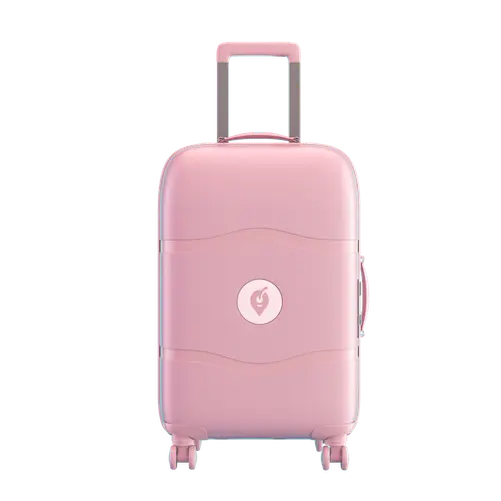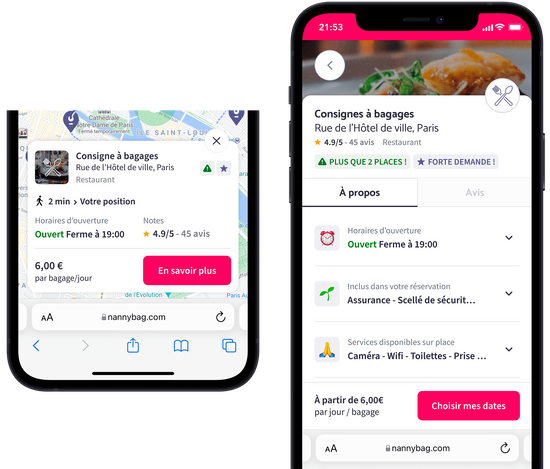Navigating Paris Public Transport: A Guide to Trains, Buses, & More

Getting around Paris is quite easy. So is understanding how to use the metro in Paris, especially if you’re new to the city. While outside the périphérique, the ring road that surrounds the city (and is the limits for the actual city of Paris), there is considerable urban sprawl into the banlieue, inside the city is quite compact and well-connected.
For a worry-free journey, consider Nannybag’s luggage transport service and have your belongings waiting for you at directly in Paris, France! You can also securely ship luggage from Paris to any other destination!
Many of the main sights and monuments in the city's center are within walking distance, and the public transport system is easy to use, reliable, and gets you all around the city. Tickets (that you buy at metro or train stations) work for all types of public transport, and a single journey ticket costs €2.10, but if you’re using the metro, this allows you to take as many transfers as you like.
You can also buy a Navigo card that you can top up and give you multi-trip savings, as well as weekly and monthly passes that allow unlimited travel within that time frame. If you’re here to study, you can get a student Navigo that allows unlimited travel around Paris and the Ile-de-France region for only €350 per year.
A pro tip: download the Citymapper app, which is a great way to tell you the quickest way from A to B at any given time, and is more reliable than, say, Google Maps.
Another good app to download if you’re a tourist traveling around the city is Nannybag, which allows you to store your luggage and bags at secure locations so you don’t have to drag them around with you as you travel around the city, instead leaving them at secure Nannybag Paris luggage lockers near you. Now, a little information about the public transport options in the city…
Metro
The Paris underground metro is the most used and perhaps the easiest way to get around the city and into the suburbs. The first line, from Porte Maillot to Porte de Vincennes, opened in 1900 for the World's Fair, making it one of the oldest metro systems in the world. Today, the Paris metro consists of 16 lines and over 300 stations, covering 220 kilometers.
Lines are identified by their number and color, making it easy to navigate the system. The metro is an important part of daily life for Parisians and a great and easy way for visitors to navigate the city, carrying over 5 million passengers daily.
Paris is quite a compact city, and it never feels like you’re far away from a stop. In truth, the metro in Paris is a brilliant service that lets you whiz around the city and will always take you close to where you want to go.
Each line of the Paris metro has its unique characteristics and attractions. For example, Line 6 is known as the "tourist line" because it passes by many popular landmarks, such as the Eiffel Tower and the Arc de Triomphe, and is also the only line that crosses the Seine River twice. At the same time, Line 12 is the only one with no above-ground stations.
Line 14, on the other hand, is the newest and fully automated line, making it one of the most efficient and reliable lines. Many stations also have some unique artwork themed for the station.
For example, the Louvre Rivoli stop on Line 1 is decorated like a museum, containing lots of beautiful art. In contrast, Clun-La Sorbonne on Line 10, in the Latin Quarter, has many beautiful mosaics on the walls, including “Les Oiseaux” by Jean Bazaine. Eighty-six of the original entrances still exist, designed by renowned artist Hector Guinard in a beautiful Art Nouveau style that feels quintessentially Parisian.

RER and commuter trains
Suppose you’re looking to go a little further afield. In that case, you may use the RER (Réseau Express Régional), a commuter train system that serves the Paris metropolitan area and its suburbs. RER trains run on above-ground and underground tracks, connecting the city center with the suburbs and the surrounding regions. Some trains are also double-deck carriages, like Lines A, which is quite a unique experience on a train carriage and means they are usually a little more peaceful and spacious!
The RER system has five main lines labeled A, B, C, D, and E, each with its color code. Line A runs from west to east and serves important destinations such as La Défense, Châtelet-Les Halles, and Disneyland Paris. Line B runs north to south and connects Charles de Gaulle Airport with the city center and the southern suburbs. Line C runs along the left bank of the Seine River and serves the western suburbs and the Palace of Versailles.
Line D runs from north to south and serves the eastern suburbs and the business district of La Défense. Line E runs east to west and connects the northeastern suburbs with the city center. The RER trains are generally faster, cover longer distances than the metro, and have fewer stops. They are also more expensive than the metro, but the price depends on how far you go while traveling.

Buses and Trams
The buses and trams in Paris are also operated by the Paris Public Transportation Authority, RATP, and they are an important part of the city's transportation network.
The city bus system in Paris is extensive and covers almost every corner of the city, with 70 bus routes within Paris city and 200 more in the greater Paris region, as well as more than 12,000 stops.
The buses are easy to use and affordable, running from early morning until late at night. Some buses run all night long, so you can get around the city even after the metro and RER trains have stopped running - it’s a handy way of getting home after a night out if you don’t want to pay for an Uber!
The tram system in Paris is a more recent addition to the city's public transportation network, with three tram lines that serve the eastern and southern suburbs. The trams are modern and comfortable, and they provide a convenient and efficient way to travel to destinations outside the city center.
One of the great things about taking a bus in Paris or hopping on the tram is that they provide a different perspective on the city than the metro and RER trains. You can see more of the city as you travel above ground and get a sense of the different neighborhoods and districts.

Say hello to exploring and goodbye to heavy bags!
What if you could enjoy every minute in the city without the burden of your bags?
- Safe luggage storage for a flat daily price of 4,50 €/luggage item
- Included luggage protection of up to €10000 in case of breakage, loss or theft
